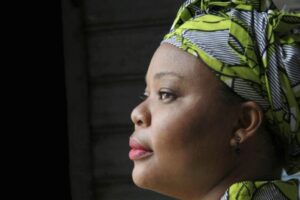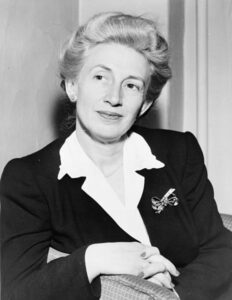Peter Buffett’s deeply thoughtful OpEd piece in the New York Times (July 27 2013) has been on my mind for weeks. I read the letters to the editor and the posts of those scrambling to respond and I also noted that 95% of those responses were from men. Where were the voices of women? And how did gender factor into the equation of both the original piece and in the responses?
In his article Buffett states that, as the son of Warren Buffett, early on in his philanthropic journey, he and his wife became aware of a phenomena they dubbed ‘philanthropic colonialism.’ Here it seemed that the donor was attempting to solve local problems rather than allowing local communities to define the problem and determine the response and then receive the funds to make this response possible. In addition, often their philanthropic dollars were contributing to NGOs working to address issues and problems perpetuated by the company’s corporate business or investment. Buffett notes the massive size of the not-for-profit sector, with its growth outstripping that of the business and government sectors.
Buffett is right. We need a new code and a new approach. It doesn’t work to, for instance, have corporations framing the breast cancer issue in terms of a focus on ‘cure’ through pink-led campaigns without full disclosure that they own the treatments they’re advocating for and that they stand to attract billions of dollars in profit as a result. Also, in many cases, a greater focus on prevention may be more desirable and effective. In this same spirit of full disclosure, I’d hope this new code would mean those corporations that use chemical compounds in their products that are known to contribute to cancer would ‘fess up that they’re perpetuating the problem with their business practices.
Similarly, it doesn’t work to have mining companies sponsor women’s organizations and events if their business operation and Board composition engage men almost exclusively and result in women being further marginalized and disempowered. Especially as the expansion of mining in many communities also results in an accompanying increase in prostitution and girl brides due to men having more money to further skew and benefit from this power(ful) divide.
We need to be advocating for, and advising, corporations to design policies and programs and budgets that are gender inclusive and that take into account different ways in which gender plays out in a board room, a bank, a war zone, a market, a village, a community.
We need to educate young people in colleges on how to work with organizations, corporations and governments to design and deliver policies and programs that are gender sensitive and to teach them how to create a gender budget. Young people don’t learn these skills in college. We need to train them to think and to ask the kinds of questions that will open up options for a different world rather than close them off. This includes encouraging risky, bold and edgy thinking that might lead us to tell different stories and to imagine different strategies and structures.
We need to commit to working to secure at least 50% of women on boards, in local government, in the media, in parliament, in peace building, in senior management. Now there’s a bold idea.
We need conferences that aren’t just focused on girls but that are organized for and by girls and young women so that they can define the languages, the approaches, the space, strategies and structures they wish to adopt and co-opt.
We need the voices of women from local groups and communities to be lifted up and to be heard at local, regional and global forums on those issues that have such an arresting impact on their lives. We need their voices to accompany or replace those of many academics from prestigious universities whose perspectives on poverty are more often heard than those with the view from the ground. We need funders to recognize the powerful role of advocacy and informal education in shaping a different world order, one that is just and equitable.
In the many convenings that donors and NGOs organize with people in local communities, we need to ensure we don’t just hear their views but that we have the funds to be able to give dollars to their dreams and allow them to feel that their time counts for more than a report or data capture. That we will invest in their dreams and breakthrough ideas to address an issue or advance an opportunity.
Rebecca Solnit’s book A Paradise Built in Hell showed the positive difference local citizens and communities can make after a natural disaster or humanitarian crisis when they are given the time and space to do so rather than be swamped by an often ‘one-size fits all’ official response that is often less effective and sometimes even damaging.
We need to commit to intentionally shifting power to those organizations, collectives and groups that want to assume greater leadership and influence in their own communities and in the wider world. This may include reducing our own staffing and representation and providing the capacity support for those groups to gain strength and diversify their resource base to be able to sustain their work. Or not. These groups may also want to influence certain policies and programs and do themselves out of a job or seed new or emerging groups and share their networks and learning with them.
Other local groups may see benefit in calling on others in the philanthropic world to help them address systemic change. Joy Anderson, Founder and CEO of Criterion Institute, is working from the ground up and building a global network of volunteers, and pairing those working in social movements with those working in finance and business to imagine initiatives that could shape markets to create social and environmental good.
We need to trust, even if it shatters our own beliefs. Buffett is skeptical about the role of microcredit in transformational change and yet women in a local community may refocus this language of micro-lending and financial literacy to a commitment to women’s access to bank accounts and health insurance accompanied by a means to earn money. For many it may mean they can save for education, an operation, a wedding and, by so doing, not be indebted for years afterwards because they had to borrow from a money lender who charged them exorbitant interest and crippled their ability to repay.
Of course beyond this is changing the system where a government in any country introduces a fair and just health care system for all its citizens. Supporting citizens to advocate for significant funding increases in basic public services including health, education, water and sanitation while also pressuring governments to reform systems that are hampered by corruption, inefficiency and gender blind operation is critical.
While “charitable intervention” alone can’t change the system, it is invariably organizations supported by flexible funds to sustain their work, that help get policies made and changed and secure laws to protect rights. Where I work at the Global Fund for Women, the women led rights based organizations we funded over the last 25 years collectively secured laws to protect over 1 billion women and girls from violence against women in 25 countries.
 We need to genuinely listen to people in communities and allow them to decide how best the funds will be used. Which donor would have provided the funds to a women’s rights organization in Liberia that wanted funds to lead a sustained protest in Liberia? The Global Fund for Women supported Leymah Gbowee’s organization, Women in Peace-building Network (WIPNET), as part of GFW’s core commitment to trusting women to know the best solutions for their community and providing flexible funds in support of this trust.
We need to genuinely listen to people in communities and allow them to decide how best the funds will be used. Which donor would have provided the funds to a women’s rights organization in Liberia that wanted funds to lead a sustained protest in Liberia? The Global Fund for Women supported Leymah Gbowee’s organization, Women in Peace-building Network (WIPNET), as part of GFW’s core commitment to trusting women to know the best solutions for their community and providing flexible funds in support of this trust.
Gbowee used funds provided to WIPNET to pay to bus a delegation of Liberian women to Ghana to put pressure on the warring factions during the peace-talk process. She led hundreds of women inside the hotel where negotiations were taking place and passed a message to the lead mediator – that the women would interlock their arms and remain seated in the hallway, holding the delegates “hostage” until a peace agreement was reached. When the men tried to leave the hall, Leymah and her allies threatened to rip their clothes off. In Ghana it’s a terrible curse to see a married or elderly woman deliberately bare herself. The women remained sitting outside the negotiating room during the following days, and the men finally came to an agreement to end the Liberian war, with the signing of the Accra Comprehensive Peace Agreement on August 18, 2003. This women’s movement also helped to ensure the 2005 election of Ellen Johnson Sirleaf as president of Liberia, the first elected woman leader of a country in Africa.
~Albert Einstein
I am enough of the artist to draw freely upon my imagination.
Imagination is more important than knowledge.
Knowledge is limited.
Imagination encircles the world.
In his article, Buffett, who is a composer as well as a philanthropist, invokes Einstein’s words of not being able to solve a problem with the same mind-set that created it. What’s interesting is that Einstein spoke of thinking in musical architectures. In a brilliant article by Robert and Michele Root-Bernstein, they refer to research undertaken by the engineer-composer Robert Mueller. According to Mueller, Einstein’s friend Alexander Mozskowski said that “Einstein recognized an unexplainable connection between music and his science.” And Einstein apparently told one of the great creators of musical education, Shinichi Suzuki: “The theory of relativity occurred to me by intuition, and music is the driving force behind this intuition. My parents had me study the violin from the time I was six. My new discovery is the result of musical perception.”
The Root-Bernsteins go on to say, “Einstein shows us how it all connects. But what do our students typically get, especially in high school and college? They get math without music. They get science without images, feelings and intuition. They get knowledge without imagination…So much for experiencing space-time through music. So much for working out ideas in images and feelings and musical architectures for which there are no words or symbols. So much for sitting down at the piano and letting the music show the way.”
This of course speaks to the wider role that the arts play in fusing forces for social change and creative new codes. We need to encourage donors, funders and governments to invest in communities that want to use the arts as a tool for social change. We need to allow these groups room for the edgy, the radical, the risk taking that allows for new stories, strategies and structures to emerge. And also old stories that rekindle, recast and reconnect what we’ve learnt and what we need to apply.
Many women I’ve met in villages and communities around the world have used stories, poetry, song, dance, art and writing to express themselves and to connect with others and gain confidence. Especially after being isolated and violated by their husbands or after a major crisis or disaster when they feel crushed or silenced and often with little hope or voice.
Giving women and girls the tools to express themselves is powerful, whether it’s a suitcase radio to gain interview skills, a movie camera for a Girls Make Movies initiative, a musical instrument for breaking down barriers (West-Eastern Divan Orchestra) or a camera to capture one’s reality and change the course of history.
Here I’m reminded of my own country, Australia, and the photographer Peter Dombrovskis’ iconic photograph of Rock Island Bend. This became the image that galvanized public opinion and inspired the national campaign to save the Franklin River from being dammed. Dombrovski was accompanied by another artist, the brilliant singer-songwriter Shane Howard, who wrote “Let the Franklin Flow“, which became the anthem for the campaign. It was released as a single with a B-side, “Franklin River – World Heritage”, written and recorded by Bob Brown who went on to become the Leader of the Australian Greens Party. With their images and music, these artists captured the imagination of a country and sparked a nation-wide protest that resulted in a High Court ruling that saved the Franklin River. Citizen action often leads to systemic change.
I’m currently reading the classic book Black Like Me by John Howard Griffin who chemically changed his skin from being white to being dark and then travelled the country for two months as a black man in 1959. Griffin tried to imagine what it would be like to be black and oppressed in his own country, at a time of deep segregation in the south; he wanted to feel human rather than white, and for it to be experienced rather than imagined. The resulting book Black Like Me sparked a firestorm of activism across the country. This was a risky undertaking and a donor put up the money for Griffin to do this even as he tried to dissuade Griffin from doing it. Even so, they both felt compelled by the cause of humanism and the hope that it would change public consciousness.
 Griffin was inspired by another writer, Lillian Smith, who was the director of the Laurel Falls Camp from 1925 to 1948. Laurel Falls Camp soon became very popular as an innovative educational institution known for its instruction in the arts, music, drama, and modern psychology. Smith ended up publishing a small, quarterly literary magazine as a forum for liberal thought and kept up her advocacy against racism by writing Killers of the Dream
Griffin was inspired by another writer, Lillian Smith, who was the director of the Laurel Falls Camp from 1925 to 1948. Laurel Falls Camp soon became very popular as an innovative educational institution known for its instruction in the arts, music, drama, and modern psychology. Smith ended up publishing a small, quarterly literary magazine as a forum for liberal thought and kept up her advocacy against racism by writing Killers of the Dream, a collection of essays that challenged racist traditions, customs and beliefs, warning that segregation corrupted the soul.
In 1955 she wrote Now Is the Time to call for adherence to the new court decision that outlawed segregation in schools as a result of the Brown v. Board of Education court case. Smith called the new ruling “every child’s Magna Carta.” Smith may not be known in the way that Griffin is known and yet her own actions were just as important. This activism speaks to Helen Keller’s words that ‘the world is moved along, not only by the mighty shoves of its heroes, but also by the aggregate of tiny pushes of each honest worker.’ In that same way, Einstein observed collective modes involving many atoms all oscillating independently within a cohesive whole.
Lillian Smith
So we stand: tied to the past and clutching at the stars! Only by an agonizing pull of our dream can we wrench ourselves from such fixating stuff and climb into the unknown. But we have always done it and we can do it again. We have the means, the technics, we have the knowledge and the insight and the courage. All have synchronized for the first time in history. Do we have the desire? That is a question that each of us must answer for himself.
And so Buffett’s call for humanism is exactly right. So too is his call for a new code, a new story; a coda — a composition — for a new world.
Emily Dickinson
The Possible’s slow fuse is lit
By the Imagination.
Jane Sloane – San Francisco

